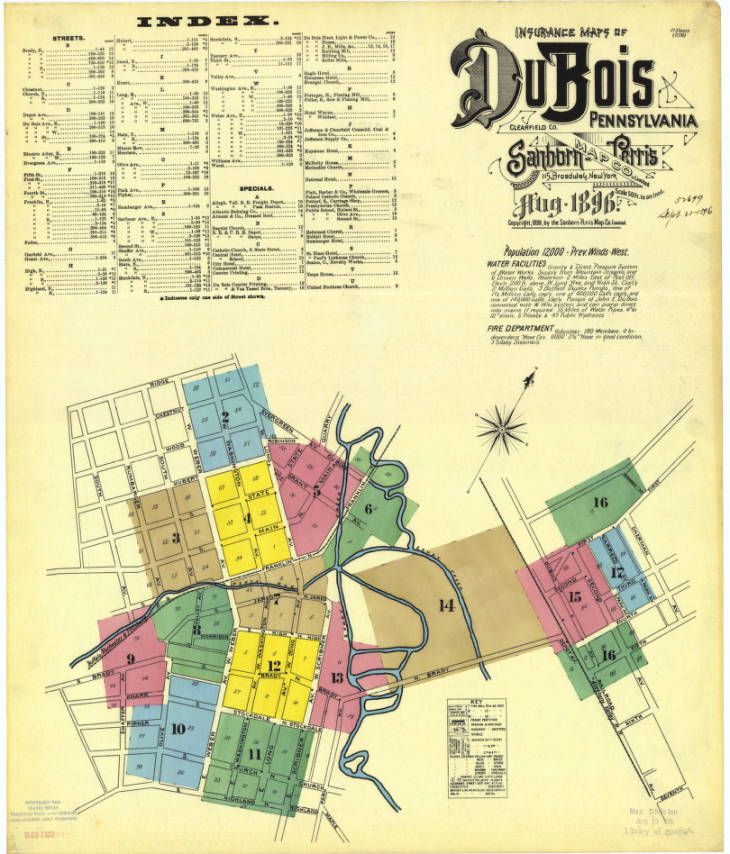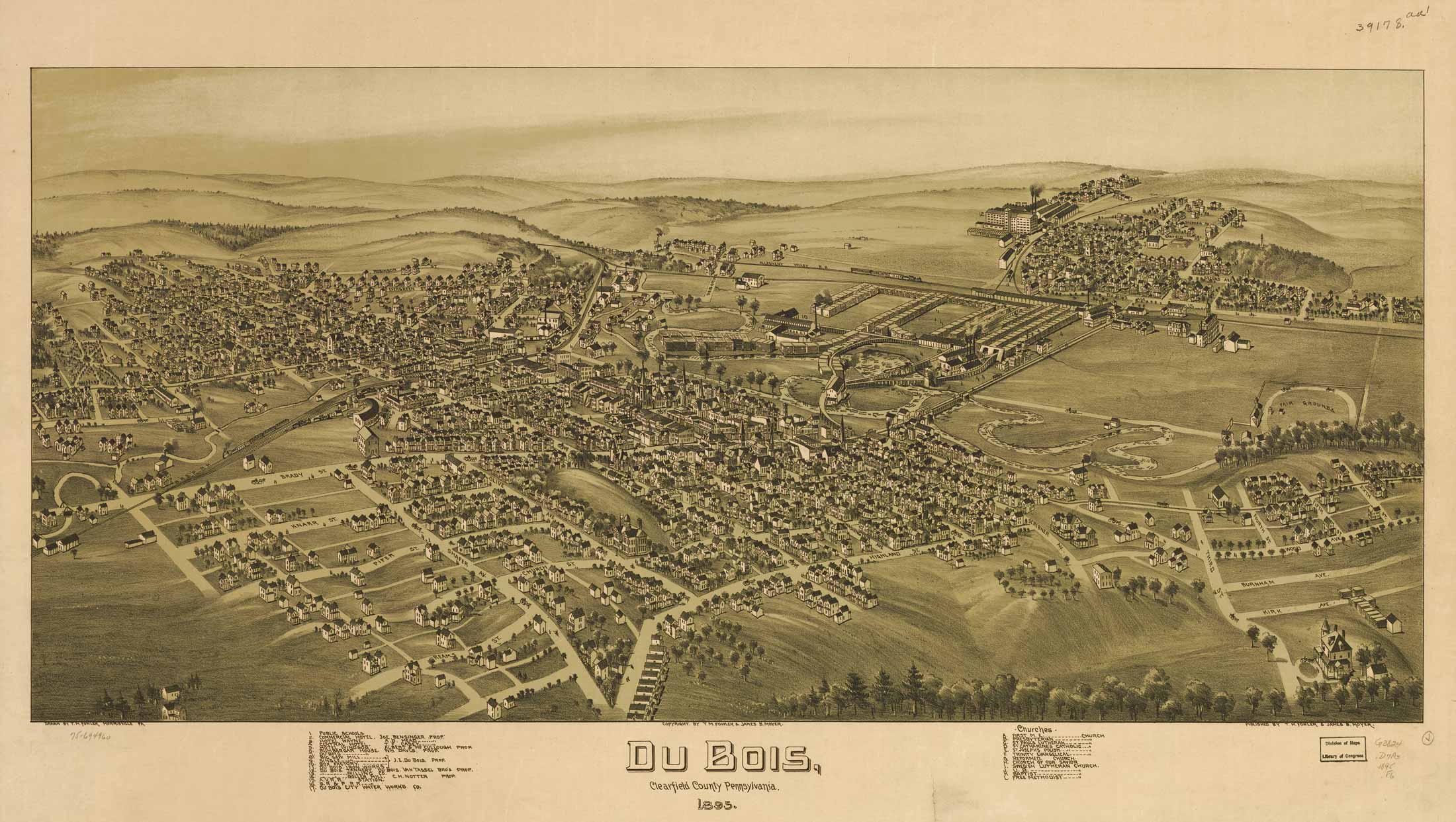.jpg)
.jpg)
TWENTIETH CENTURY HISTORY OF CLEARFIELD COUNTY PENNSYLVANIA AND REPRESENTATIVE CITIZENS by Roland D. Swoope, Jr. Chicago, Ill., Richmond-Arnold Publishing Company, 1911
CHAPTER XIV.
HISTORY OF DU BOIS BOROUGH.
The Borough of Du Bois is situated in the extreme northwestern part of the county, two miles east from the Jefferson county line. It is located on a part of what is known as the "Great Beaver Meadow." This "Beaver Meadow" is from five to six miles long and from one-half to three-fourths of a mile wide and Sandy Lick Creek flows through the center of it. The land for a distance of five miles along Sandy Lick Creek flows through the center of it. The land for a distance of five miles along Sandy Lick Creek, is almost level, there being only a fall of twenty-one feet in the five miles. The town has extended far beyond the width of the Meadow and occupies a large portion of the adjacent hills.
The site of Du Bois was settled as early as 1812 by the Stoebers, who came from Dauphin county, Pa., but there was no indication of a town being located there until the opening of the low grade division of the Allegheny Valley Railroad in 1872, when John Rumbarger surveyed a plot of lots and called the same Rumbarger. About this time John Du Bois appeared upon the scene and proceeded to erect large saw-mills for the purpose of manufacturing into lumber the many thousands of acres of timber in the neighborhood, of which he was the owner. He also constructed iron works and laid out a town plot on the opposite side of the creek from Rumbarger and called his town Du Bois. The railroad station was also called Du Bois and in 1876 the name of the post office was changed to Du Bois.
The borough was incorporated in 1881 and has grown rapidly in population until it is now the largest town in the county, having a population of about 12,000, and being the center of the bituminous coal industry of that section of the county, and, also of the mines in Jefferson county that are tributary to Du Bois.
The building of the Buffalo, Rochester & Pittsburg Railroad to Du Bois in 1883 and the opening up of the large coal operations in Jefferson county, belonging to Bell, Lewis and Gates, and now owned by the Rochester & Pittsburg Coal & Iron Company, furnished a large amount of business to the town and more than made up for the loss of business caused by the closing of the Du Bois saw mills on account of the exhaustion of the lumber supply. This railroad was extended to Clearfield in 1893, thus giving the first railroad communication with the county seat.
The Buffalo & Susquehanna Railroad was constructed to Du Bois in the year 1904.
The industries of the town consist of saw mills, large tannery, glass works, iron works, coal mines and many other smaller industrial plants.
The town has ten churches, three daily newspapers, two national banks, one trust company, paved streets, electric lights, water supply and an electric street railway system.
The business part of the town was almost totally destroyed by fire in the year 1889, but with characteristic pluck, the business men of the town rebuilt on a larger scale than before.
Du Bois is the metropolis of the county. Its people are energetic and progressive, and the steady growth in population and prosperity are the results of their enterprise.

Du Bois Sanborn Map, 1896

Du Bois 1895